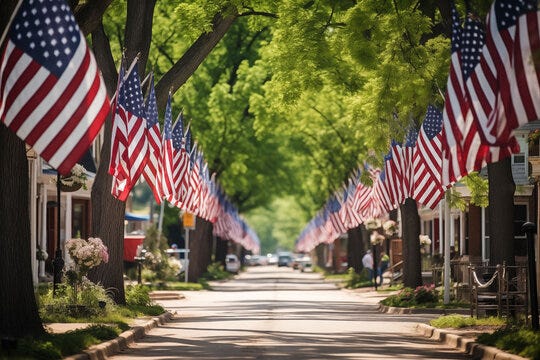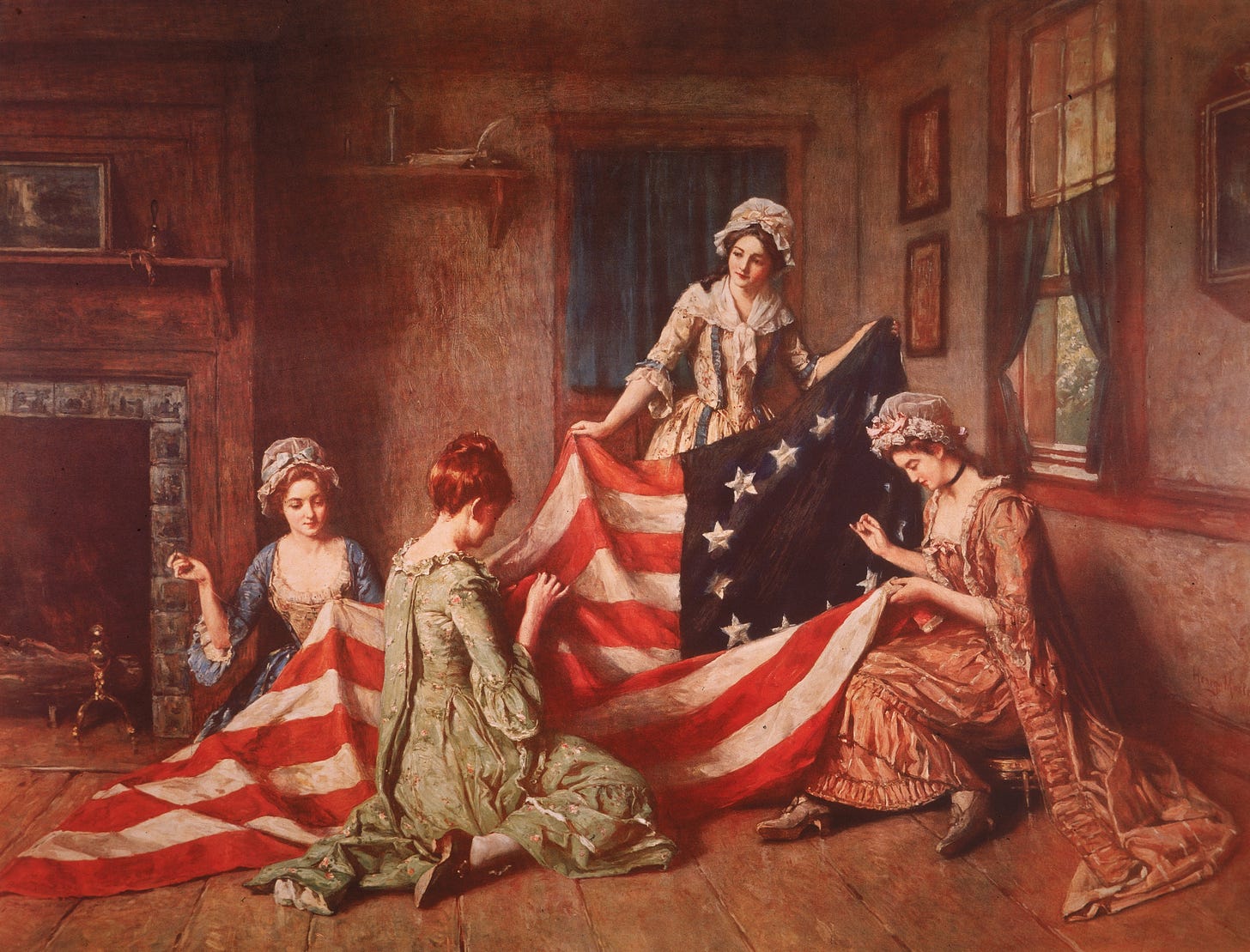Stars and Stripes Forever
The American relationship to our national flag is uniquely wonderful and deserves to be preserved.
Today, July 4, 2025, is the 249th anniversary of the signing of the Declaration of Independence – generally recognized as the founding moment for the greatest country on Earth, the United States of America. It is a day full of celebration, patriotism, family, friends, food, and fireworks. And the one thing that is nigh-ubiquitous during the Independence Day festivities is the most important and lasting symbol of our great nation: the American flag. The Stars and Stripes are everywhere this time of year. Of course, we have flags of all shapes and sizes, adorning yards, decks, boats, cars, and pretty much everything that you can attach a flagpole to. We have t-shirts, swimsuits, plates, napkins, banners, buntings, baseball hats, and more. The red, white, and blue are the colors of the season, so much so that if you see someone on July 4th not wearing one, or all, of those colors, you are immediately surprised.
But this is not how other people around the world feel. If anything, they think our veritable obsession with our flag is off-putting, bizarre, tacky, and, uncomfortably nationalistic. If you have ever been to Europe, you’ll immediately notice the difference in how their own national flags are treated: they are rarely displayed outside of tourist hotspots, government buildings, and international soccer competitions. When people gather in large groups to fly the national flag, it is often seen as threatening, not joyous. In much of Europe, foreign flags – particularly of Islamic nations and terrorist groups – seem to outnumber domestic ones. Seeing an ordinary house flying the flag is but a remote possibility across much of the planet, but a normal occurrence in America. Most other nations have far more restrictive flag codes than we do, forbidding the use of the flag in anything except near-perfect conditions and enforcing that edict with criminal or civil penalties. By contrast, we promote the use of the flag on everything we do and are very liberal about its handling – even to the point of protecting the act of its desecration.
Thankfully, that violation of the national symbol is relatively rare. Despite wide variations in patriotic pride amongst the political parties in the US, the public has an almost universal admiration and love for our national banner. A full 60% of American adults had a “very positive” view of the flag, with another 17% having a “somewhat positive” feeling. Only 7% of those polled had either a “somewhat negative” or “very negative” view, an order of magnitude less than those who felt the opposite. Historically, even protest movements against government policy – notably the Civil Rights movement – have claimed the flag as their own. A full 54% of Americans say they have one at home, an astonishing number. It is omnipresent at sporting events, stores, parks, and religious establishments. Our entire national anthem is based on the unlikely survival of the stars and stripes at Fort McHenry in Baltimore in 1814 and its symbolism of national triumph – and we still have it prominently displayed in our capital’s history museum.
We have had variations of the same flag for nearly two-and-a-half centuries now, making the American flag one of the older official national banners on the planet. In terms of large peer democracies, our flag is older than the nations of Italy and Germany and older than both the French tricolor and the Union Jack. The flag’s design is unique and was considered especially so at the time of its creation. Very few national flags include the large number of stripes and separate field of images, in our case stars, in their designs. The only truly comparable design for a large country is that of Malaysia which, being adopted in 1963, is nearly two centuries younger than Old Glory and a clear facsimile thereof.
But the flag is also dynamic, and not only due to the addition of stars for newly-admitted states. The original Continental Congress resolution adopting the design was fairly vague, stating only:
“Resolved, that the Flag of the thirteen United States shall be thirteen stripes, alternate red and white; that the Union be thirteen stars, white on a blue field, representing a new constellation.”
That’s legitimately it. The “new constellation” language was highly interpretable and fostered myriad interesting and distinctive designs. The so-called Betsy Ross flag, the banner most associated with Revolutionary America, had its stars arrayed in a circle. Other flags arranged them in a star pattern, while yet more chose variations on alternating lines. Until it was codified in 1912, the choice of how to create the “constellation” of stars was left to individual flag-makers, with nothing besides their number and color officially regulated. As the nation became more interconnected and the modern mass democracy was born, the flag was standardized. But that did not make it less interesting or attractive to its viewers, either at home or abroad.
Today, the flag is a truly iconic symbol that has become instantly familiar. In fact, it very well may be one of the most recognizable man-made images in the entire world, nearly on par with the symbols of Christianity and Islam. You can go to posh resorts in the Alps, tribal villages in sub-Saharan Africa, Buddhist monasteries in Nepal, the barren wastes of Siberia, or the Amazon rainforest and you are almost guaranteed to meet people who can immediately identify the American flag. It, just like the nation itself, is exceptional in this way. Just as recognizable as the flag are the ideals it represents – freedom, individualism, capitalism, democracy, innovation, and justice, among others. Those classical American values are enduring and deserving of reverence. The flag should be thought of the same way.
May the Stars and Stripes live forever.
Happy Independence Day. Enjoy the blessings of liberty, good company, and festive traditions. And never forget how lucky we are to live in the greatest nation on Earth. God bless America.



